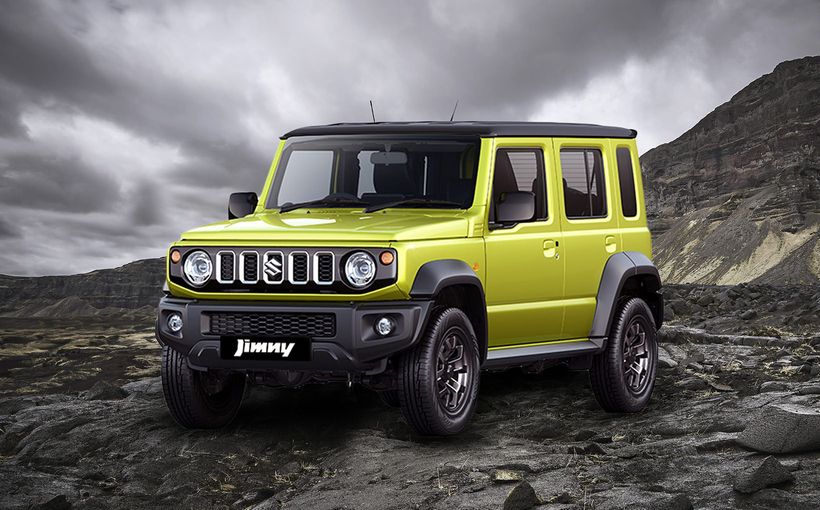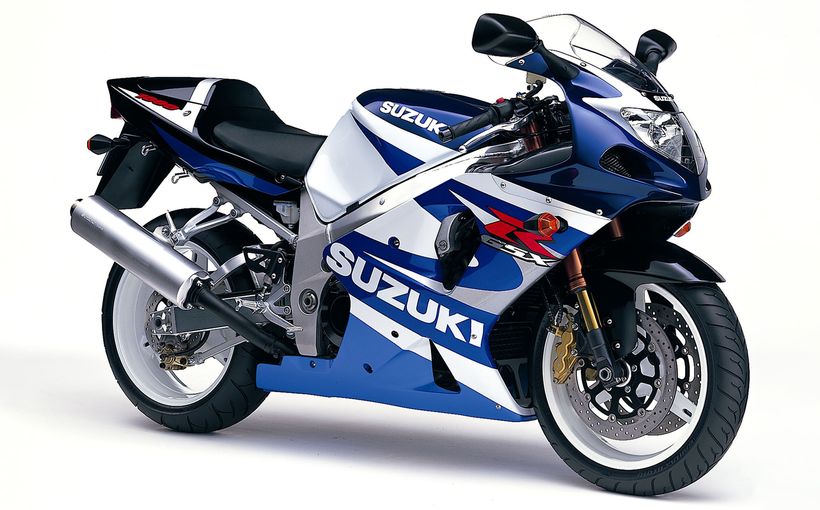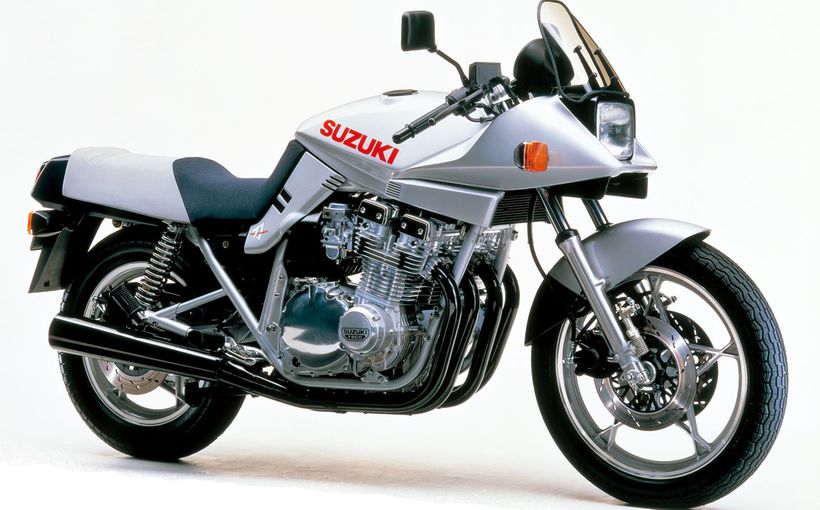Future Classic: Suzuki GX1300R Hayabusa - Bird of Prey

WORDS GUY ALLEN PHOTOS MT ARCHIVES
Suzuki celebrated a minor milestone last year – the 20th anniversary of the launch of its iconic sportstourer, the GSX1300R Hayabusa. In some ways, it’s a little surprising more of a fuss wasn’t made – the international celebrations for the 10th anniversary were far more substantial – as the model had managed to become both iconic in the performance world and something of a cult classic.
While we may have become used to the bulging lines of the first edition across the years, at the time of the launch in Paris and then Spain back in 1999 they were truly shocking. It was the work of designer Koji Yoshiura, who told Autoevolution online in 1999: “We showed the head of marketing the final clay prototype, and he was stunned. Totally speechless! He didn’t know what to say, which is a little like the reaction we got at the Paris show. The bike was a bit polarising – people didn’t know quite what to think of it.”
Amen to that. In fact, you could well imagine Suzuki wondering if it might have a potential sales disaster on its hands. Motorcyclists are notoriously conservative in their buying tastes and it was easy to imagine them walking away.

Three colour schemes were offered, including black, a red/black combo and the most famous of all, the two-tone copper scheme.
However, it was what was under the paint that saved the design. Suzuki rightly claimed fastest production bike in the world status, immediately passing Honda’s Blackbird by a substantial margin with a top speed in excess of 300km/h. Production bikes managed anything up to 310km/h, depending on the individual machine and conditions.
What powered this monster? It was a very conventional package underneath the radical (and aerodynamically efficient) bodywork. The liquid-cooled inline injected four ran four valves per cylinder, and displaced 1298cc. It was encased in a big twin-spar aluminium frame, with upside-down suspension at the sharp end and a monoshock on the rear.
Yup, that was it. Nothing radical. A set of six-piston brake calipers graced the front end, and that was about as exotic as things got.
However, the numbers stacked up to something performance hounds could dream about 175 horses (130kW) – an industry-leading number at the time – with a claimed dry weight of 217kg, or closer to 240kg wet. Dragstrip times busting the 10-second barrier were part of the package.

SECOND TO NONE
The company’s media launch happened at the Catalunya GP track, though Suzuki staffers soon realised the track didn’t really allow the bike to properly stretch its legs. So journos were quietly cut loose on the nearby freeways, where they could enjoy the near-religious experience of a ’Busa at full flight.
And the name? Well, that was Suzuki’s little corporate joke. You see, the Honda Blackbird was the performance leader that needed to be knocked off its perch. While Honda saw the name, and styling, as alluding to the ultra-fast Lockheed SR-71 spy plane, Suzuki took a different and more obvious interpretation. It named its rival after a peregrine falcon that is known for its ultra-fast dive speeds (300km/h, coincidentally) and has blackbirds (the feathered variety) for breakfast. Ho, ho.
At an introductory price of $17,500 (plus on-road costs), they walked out the door.
Suzuki managed the launch just before a worldwide industry agreement that nailed top speeds at 299km/h (so much safer than 310…). That meant the second version of the Hayabusa (the K1 in 2001) arrived with a speed limiter and a speedo that showed increments but no numbers past 280km/h. Previously, they’d been marked to 340.


In turn, that revelation started a mini-industry in aftermarket speedo faces and plug-in speed limiter eliminators.
While there was an element of customer outrage at the lower speedo numbers, sales kept humming along nicely. Anyone who bought the slightly later models benefited from two significant mods. The first was replacement of the aluminium subframe with a stronger steel unit. It added around 4.5kg to the weight, but was less inclined to bend under the weight of a generously proportioned pillion.
Far less publicised was the upgrade of the processor in the ECU from 32 bit to 64, which actually gave the bike a slight performance lift. We’re only talking a couple of horses, but it was there.
Unquestionably the Hayabusa was a damned good motorcycle. A serious performance weapon, obviously, though a little big and heavy to be a serious track bike. The broad spread of power made them a thoroughly entertaining road mount, pretty much regardless of the conditions.
There’s no question they out-performed the Blackbird, and sold far better than
the soon-to-be-launched and surprisingly overshadowed Kawasaki ZX-12R. However, Blackbird sales continued to burble along nicely, and deserved to, as it was still a quick and very refined mount.
The Hayabusa works brilliantly as a road bike, even today. It handles and stops acceptably while proving to be a surprisingly good tourer.
One sub-culture that the Suzuki enjoyed was becoming the darling of the US modifier crowd. Like the legendary air-cooled GSX platform of the 1980s, the engine package responded well to all sorts of wild tuning approaches and proved incredibly robust. Turbo kits were particularly popular, though often cobbled together with all sorts of plumbing poking out the side of the fairing.
Generally, the design has proved ultra-tough and fuss-free. Taller riders will soon find themselves getting a bubble-style windscreen, as the stock unit is low and reduces their view of the instruments.
They also run a marginal battery size, which can be an issue if the bike isn’t used regularly or the battery ages. The hot tip is to get a lithium unit.

IN THE MARKET
Suzuki got Yoshiura to revisit his design for the MkII version of the Hayabusa, giving it a significant rework. It kept much the same profile, but for a lighter look to the whole thing. Upgrades were extensive, including a slightly larger (now 1340cc) and more powerful (190hp/147kW) engine, new suspension and different brakes. The fronts now ran four-piston calipers that offered more power and feel. As an owner of a first-gen Hayabusa, I reckon the second-gen is a worthy upgrade.
There is talk of a third-gen Hayabusa coming next year, with a 1440cc engine.
As a collectable, the first copper-coloured bikes are already very much on the radar and most of the survivors seemed to have been squirrelled away. Expect to pay high teens for a good one. I have a suspicion owners are biding their time with these things, hoping for further gain.
Any first model (1999-2000) is going to be a good bet for holding its value, though I’d be wary of planning your financial future around them as they were sold in substantial numbers.
Bikes from 2001-on are in plentiful supply and often great value for money. As little as $6000 will get you a decent one with 50,000-60,000km on the clock, while $9000 will get you something in great condition with minimal miles. In either case, you’re getting a huge amount of bang for your buck.
One day all of them will be worth something, but we’re talking a long time. Regardless of those considerations, first-gen models are rightly famous and always a talking point among riders, even today. That adds up as a pretty compelling package, if you’re in the market.
YOSHIURA
Interviewed by Motorcycle News UK for the 10th anniversary of the Hayabusa, designer Koji Yoshiura had this to say: “The mission was to create a total new styling that will not be out of date within a few years, and a styling that would be the ‘face’ of Suzuki.”
‘Fastest production motorcycle’ was never a concept nor a target of this bike [at the beginning of the project]. As a consequence of pursuing the best handling, acceleration, safety, power, riding ability, original styling, etcetera for the good of the customers, it became the fastest.
“My aim was to create a somewhat grotesque design and create a strong initial impact.
“By doing this, once the model was out in the market and the performance of it have been proven, I thought that people will start to show interest to the weird design, and then the design would be caked in people’s minds.”
SUZUKI GSX1300R (GEN I)
ENGINE
TYPE: Liquid-cooled, four-valves-per-cylinder, inline four
CAPACITY: 1298cc
BORE & STROKE: 81 x 63mm
COMPRESSION RATIO: 11:1
FUEL SYSTEM: Mikuni Denso EFI
PERFORMANCE
POWER: 130kW (175hp) at 9500rpm
TORQUE: 126Nm at 6750rpm
TRANSMISSION
TYPE: Six-speed, constant-mesh
FINAL DRIVE: Chain
CHASSIS & RUNNING GEAR
FRAME TYPE: Aluminium twin-spar
FRONT SUSPENSION: USD telescopic fork, full adjustment
REAR SUSPENSION: Monoshock, full adjustment
FRONT BRAKE: 320mm disc with six-piston calipers
REAR BRAKE: 240mm disc with two-piston caliper
DIMENSIONS & CAPACITIES
WET/DRY WEIGHT: 240/217kg
SEAT HEIGHT: 805mm
WHEELBASE: 1480mm
FUEL CAPACITY: 21L
TYRES
FRONT: 120/70-17
REAR: 190/50-17
OTHER STUFF
PRICE From $17,500 (plus on-road costs) in 1999

Protect your Suzuki. Call Shannons Insurance on 13 46 46 to get a quote today.









